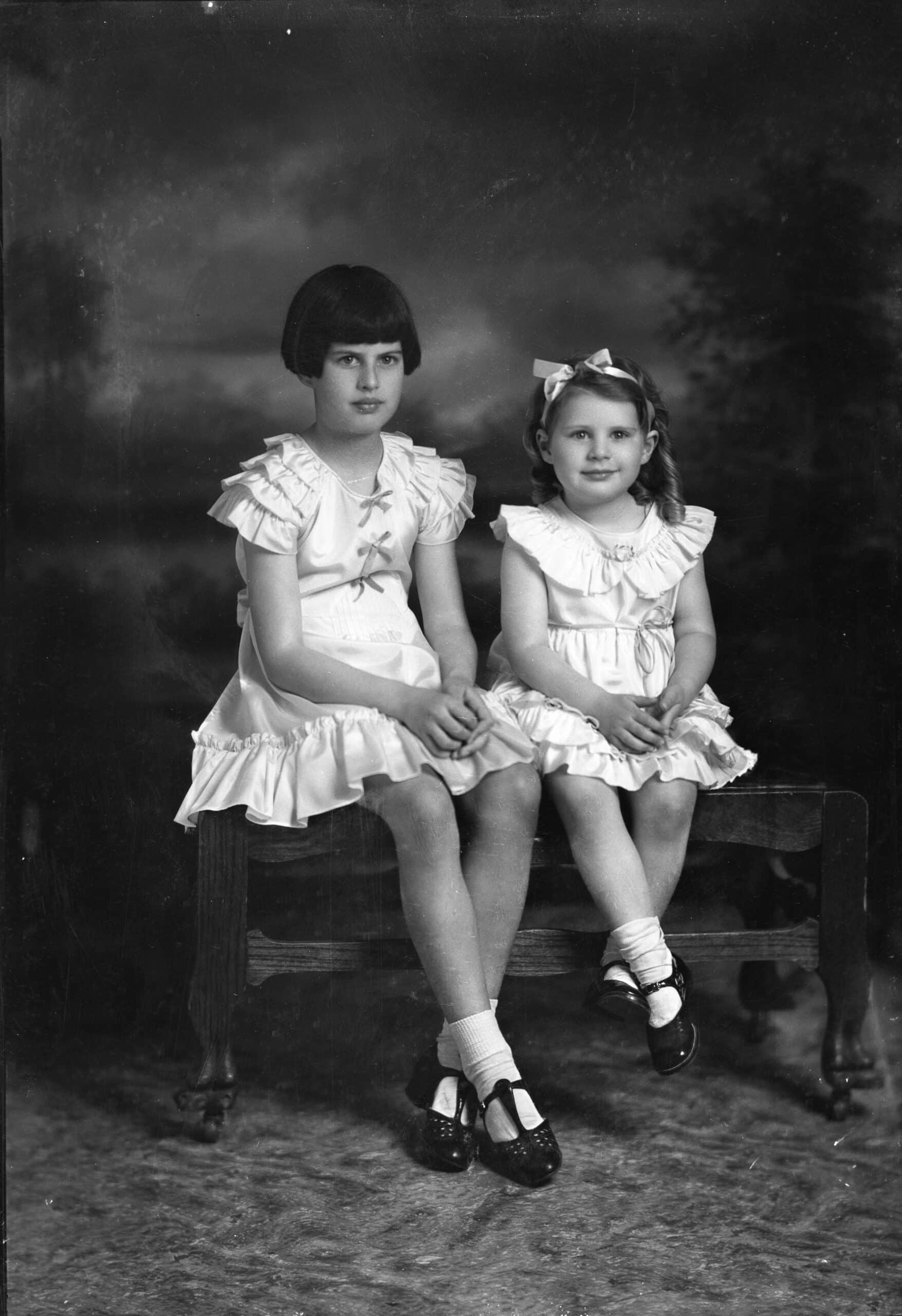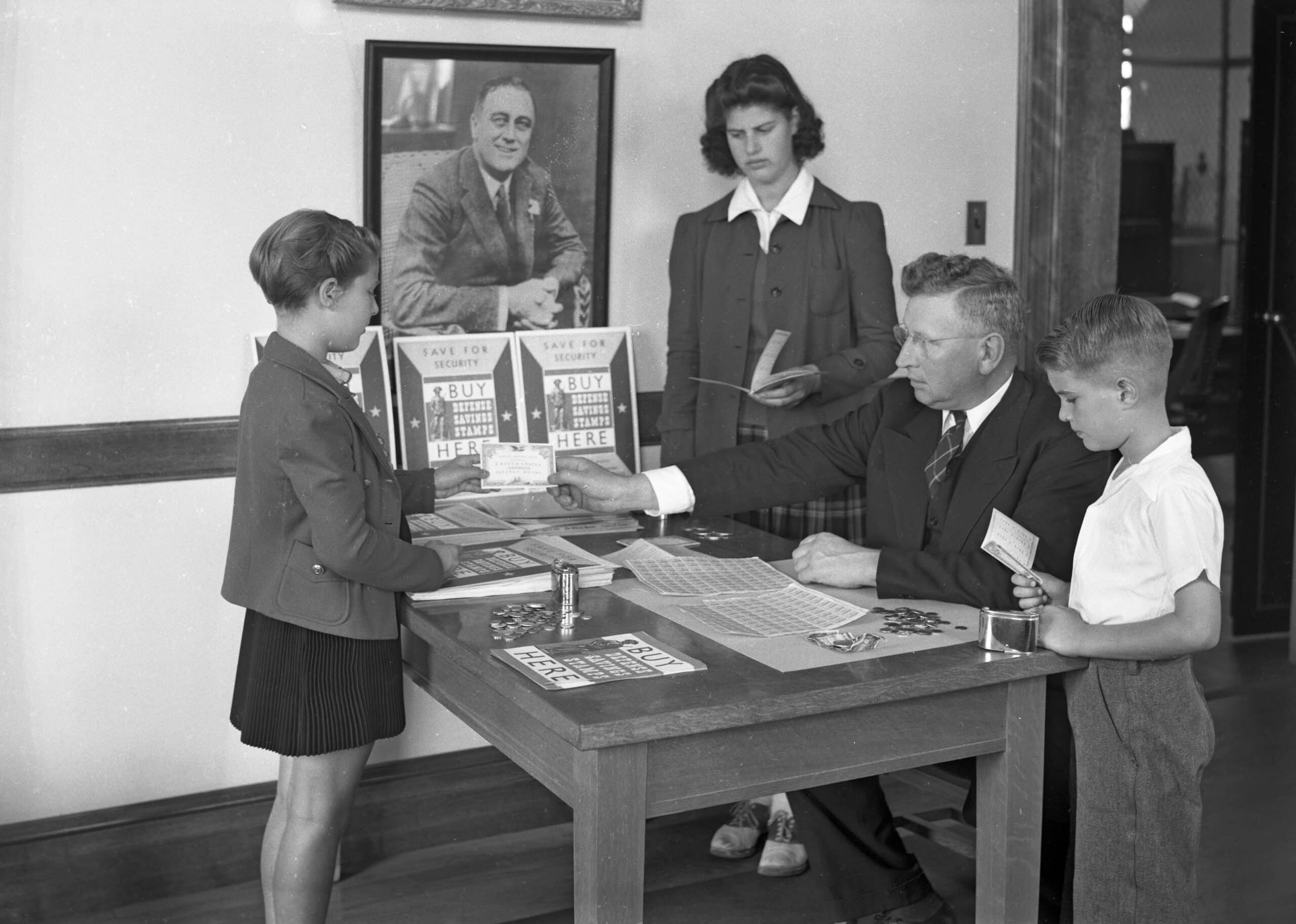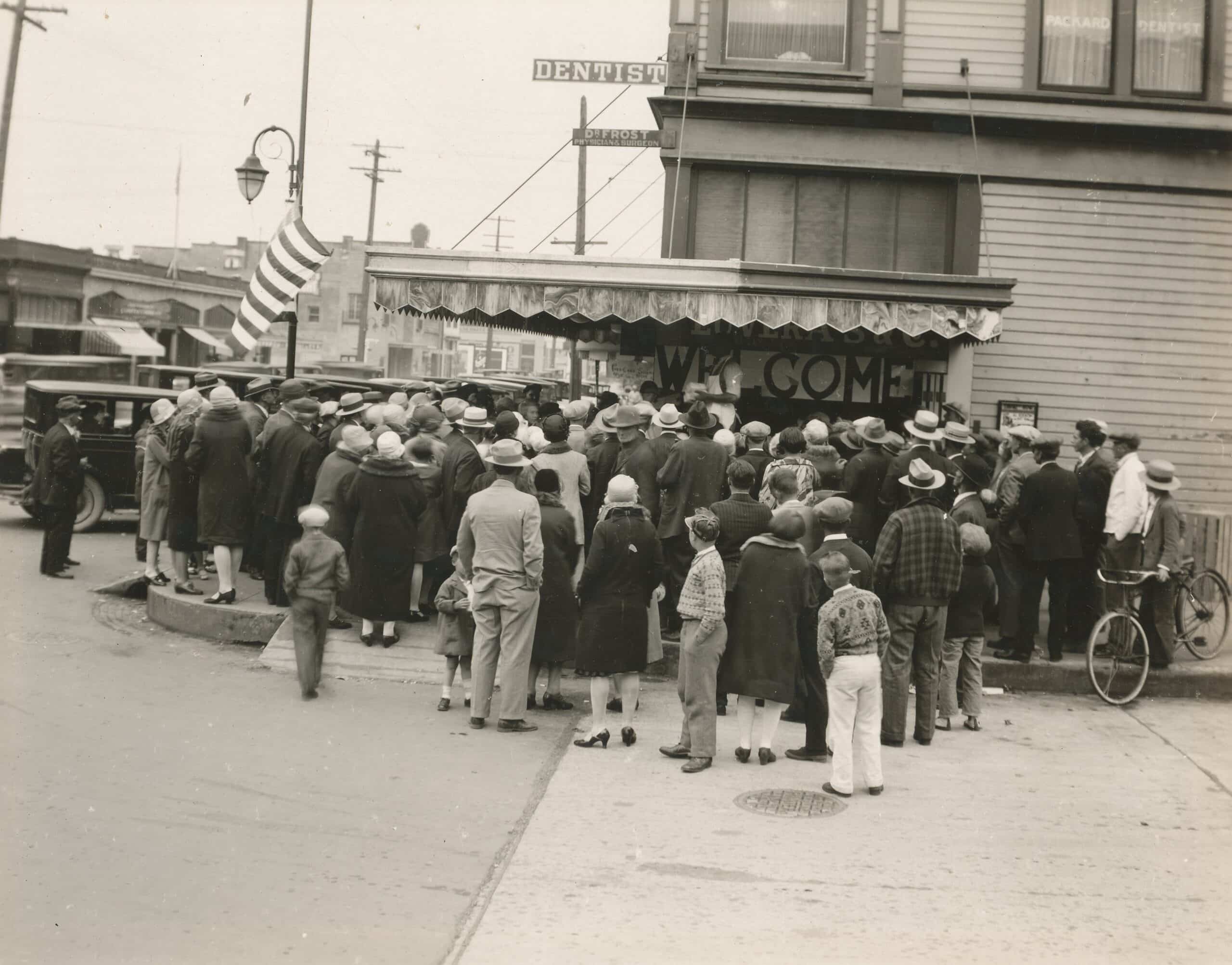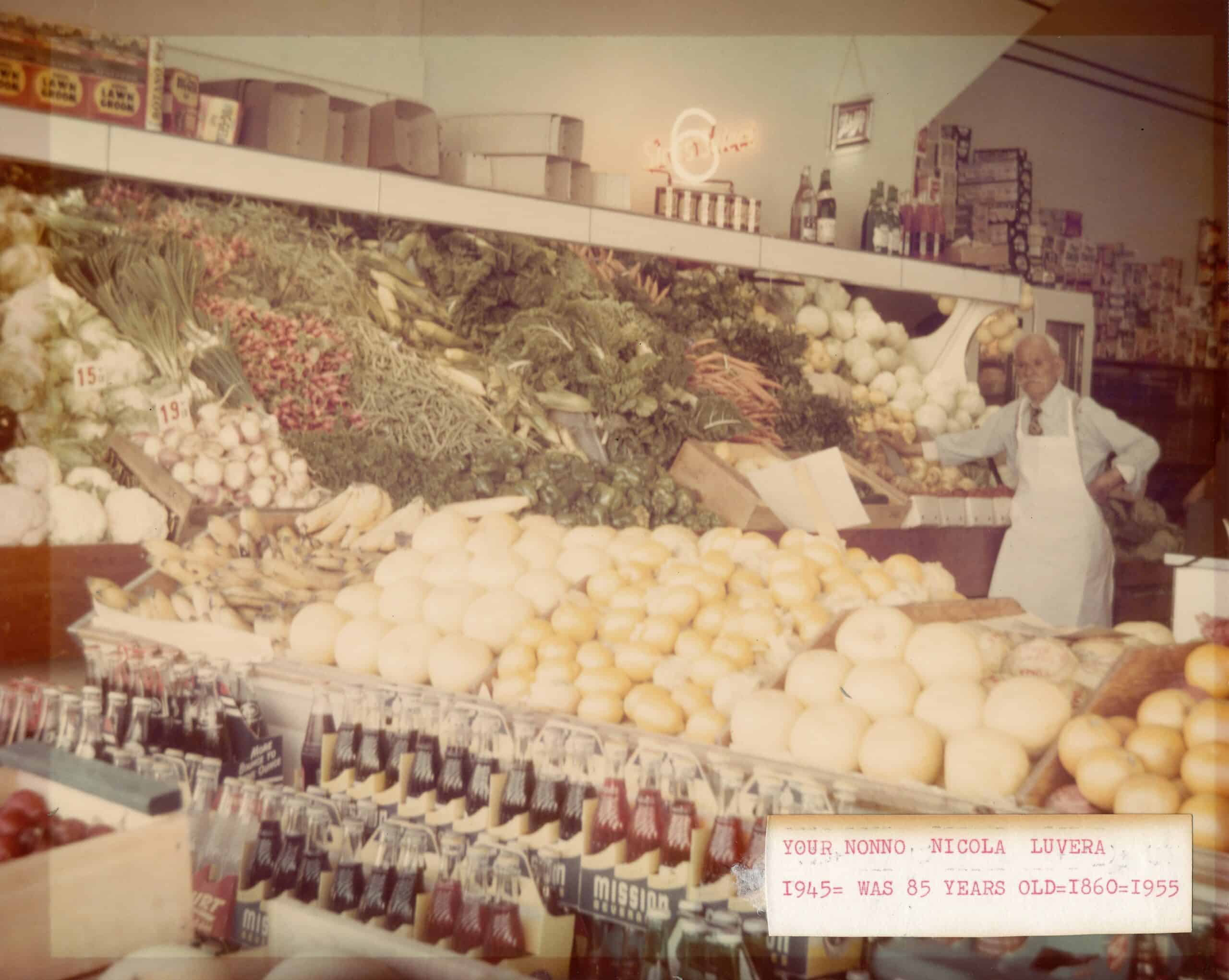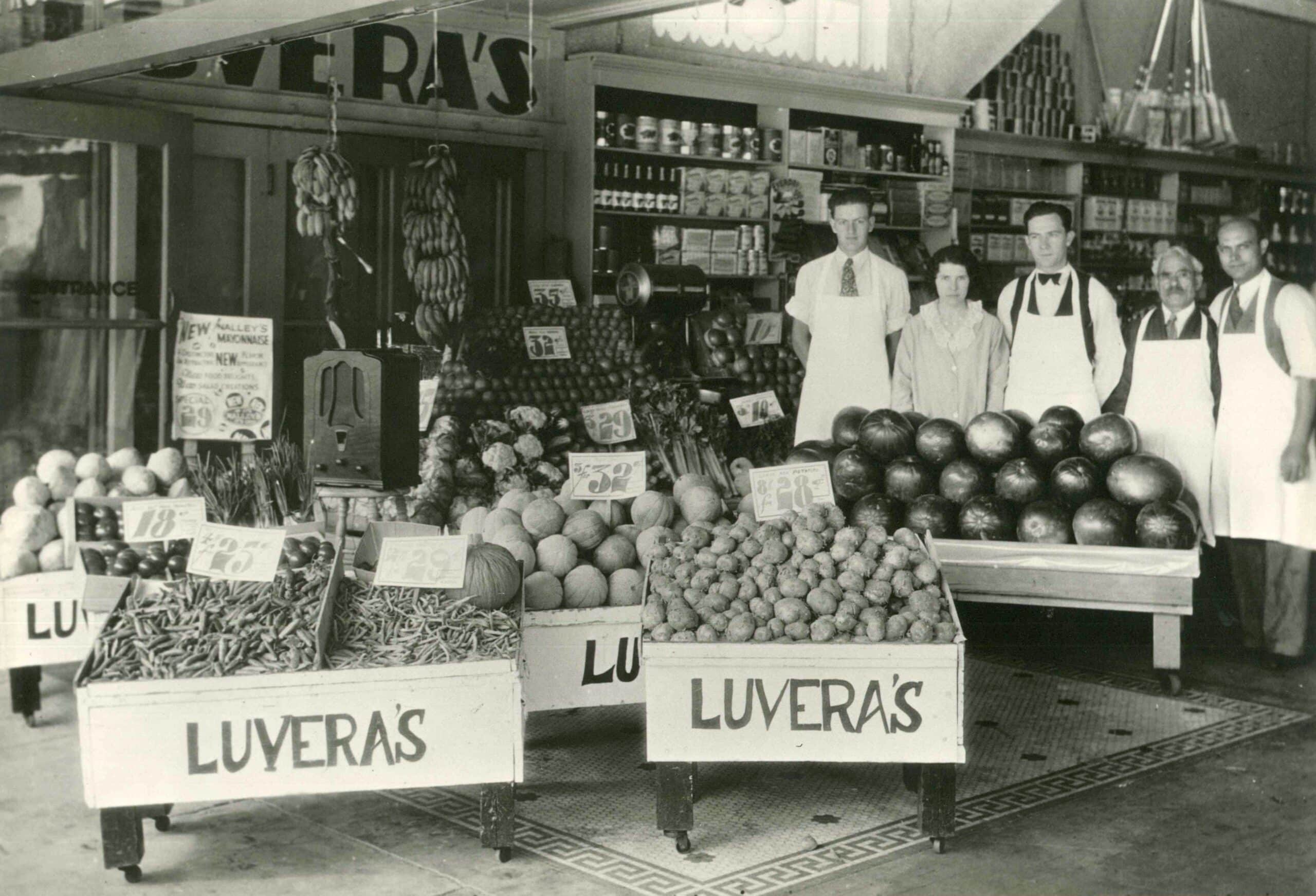It’s the 1940s and you’re the cook aboard an eight-person purse seine fishing crew going out for six-day expeditions in Puget Sound. How do you get enough food to feed your crew and keep them working? Well, with the help of a young Anita Luvera, daughter of Paul Luvera, and the supplies of Luvera’s Market in Anacortes.
Late Friday evening, boats hailing from around the Sound start to tie up into the Anacortes port. The first vessels coming in dock at berths, but once those run out, they tie their boats onto each other. Several hundred purse seiner crews start to disembark, and the whole town starts to buzz. Fishermen who have been away for six days go into town for a hot meal and a soft bed, and orders start coming in at Luvera’s Market. Anita, her father Paul, and her grandfather Nicola run around taking orders from ships’ cooks to supply the fishing fleet for their next six days at sea.
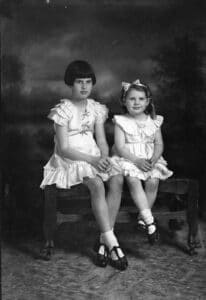
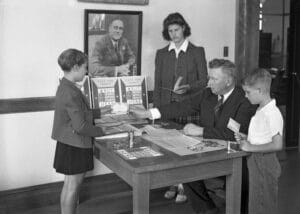
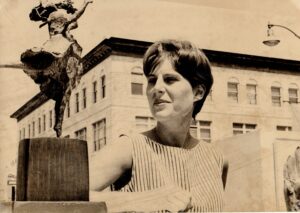
“By the time I was [in] middle school, high school, I worked till midnight,” said Anita.
Supplying the Ships
One of Anita’s many jobs is making sure that all the orders are filled. French bread from a bakery down the street, fruit and vegetables from farms on the mainland, plenty of canned goods, and tons of dry spaghetti noodles. A few hours of sleep later, the bakery is wheeling steaming carts full of bread down the street to Luvera’s Market where Anita is ready with white butcher paper to pack them into individual boxes for the fishing vessels. Each boat has ordered eight or 10 loaves, so there’s a lot to be done still.
Around 6:00 am on Saturday, once every boat’s order is ready, Anita and her family drive the three Luvera trucks down to the fleet. They deliver directly to each boat. “Sometimes we carried groceries over five or six boats because there were limited marinas, so the boats tied up to one another,” she recalls. “By Saturday night, it was all over, and we collapsed.”
But then, starting Sunday night, orders started to come in from the canneries and buyer boats. These businesses acted as the go-betweens for fishers who had missed something in their order or needed additional supplies. Those orders would be filled by Anita’s father, who would get up at 5:00 am on Sunday and deliver additional supplies to the buyer boats for delivery to the fisherman at sea.
Anita’s work at the store started in 1942, when she was just 10 years old. “The cookies came in bulk, and I was to bag them with the right numbers of eclairs to Fig Newtons, which were not as attractive,” said Anita. Even in low times, Anita’s father didn’t ask her to work without something in return. “My mother had made aprons for anyone who worked for Dad at the store with ‘Luvera’s’ embroidered on them. I had an apron. And from the beginning, when I started working, my dad paid me a weekly salary.”
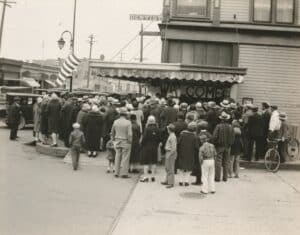

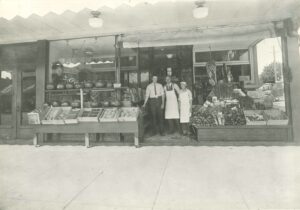
Supporting the Community
Anita used her salary to buy stamps and bonds, which at the time supported the United States efforts during World War II. These bonds, along with her pay from working summers at the family store, helped Anita pay for her first three years of college. Being involved in the war effort by purchasing bonds and supporting the fishing and canning fleet was also an act of patriotism for the Luvera family. Anita’s grandfather, Nicola Luvera, had emigrated from Italy to Canada and worked in a coal mine for three years before he could afford to move his family to the United States. Eventually, they settled in Anacortes and opened Luvera’s Market. They quickly established themselves as a reliable source for the neighborhood and fishing fleet.
It wasn’t always easy, though. “More than once dad carried thousands of dollars of debt through to the next year by getting local loans…But if the boats didn’t get fish, they couldn’t pay their people and they could not pay us,” said Anita. “So, the whole town was involved. If it was a good season, everybody could pay their bills up and down Main Street. If it was not, there was no money.”
Over the years, Luvera’s Market began to serve as a central meeting area on Main Street, with large folding doors that made the sidewalk into a produce display and gathering space. “Fishermen of all ages and types gathered out there sharing and gossiping, and drinking, and all eating dad’s fruit, which was fine by dad,” Anita recalls.
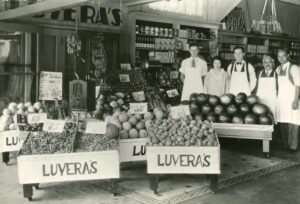
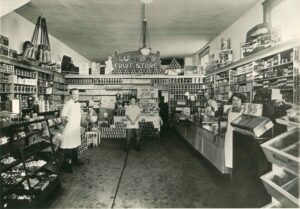
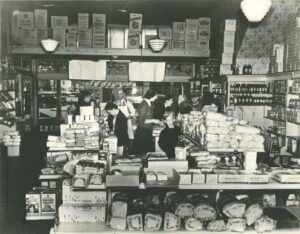
Anita’s Inspiration and Career
“I didn’t know till I was an adult what a gift it was to be raised with such respect and [with] confidence in my ability to work at the store and do a good job. It gave me a [sense of] self-confidence for the rest of my life [and] was a quite amazing experience.” After her years working at the family market, Anita found her way into textile arts through her husband’s family. “[The] first time I visited the family, his mother had three weaving looms. I had no idea what they were. But I thought, ‘This looks like an interesting family,’ and as each son married, she gave each of us a 36-inch floor loom and taught us how to weave cloth,” said Anita. She also went on to travel the world, exploring a wide variety of textile arts, writing books on weaving, and creating iconic designs.
Anita is now 91 years old. Anacortes has grown and changed, and her family’s store with its folding doors is now a gift shop—which sells Anita’s fiber arts—and fused glass teaching studio.
Anita was recently recognized by the Women of Anacortes organization for her commitment to the community over the years. She still hosts open studio sessions and teaches at a local senior center. “I don’t travel the world anymore,” she says, “But I still am contributing, however I can, to the community and staying in contact with younger people wanting to learn.”
Growing up in a waterfront community and working to support so many crews, Anita has a lifelong fondness for the ocean. “Anytime there’s an issue in my life, I walk the beach. I need the smell of salt air. I would not last long outside of Washington,” said Anita. “Water, the boats, the activity. I love this community.”
To read more about other women on Washington’s working waterfronts, check out our other “Women on the Waterfront” stories. Hear from ferry Chief Engineer Beth Adams about what it takes to keep Washington’s most unique transportation system sailing, or hear from tugboat captain Katrina Anderson about what it’s like to guide ships to shore.
Historical Note: While purse seine fishing vessels are typically crewed by four or five people today, that work is enabled by the invention of the Puretic Power Block. Prior to it’s use, purse seiners were crewed by eight or nine people.


